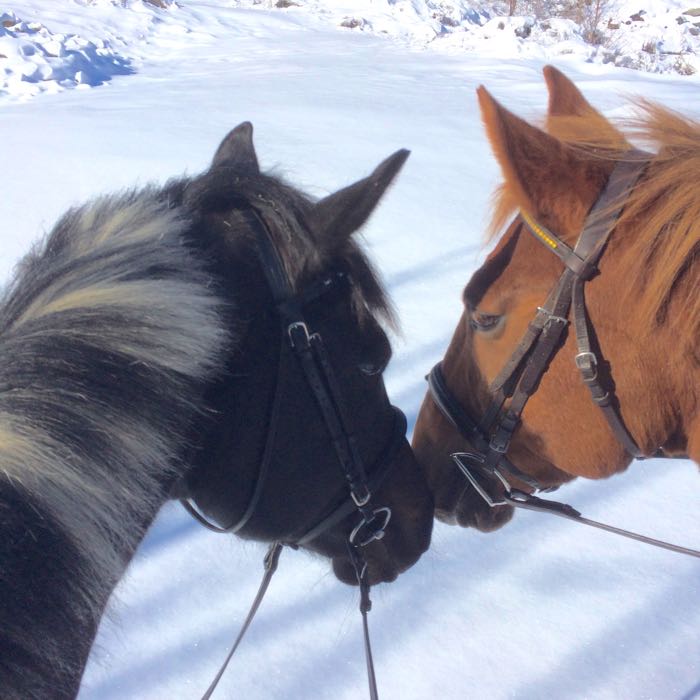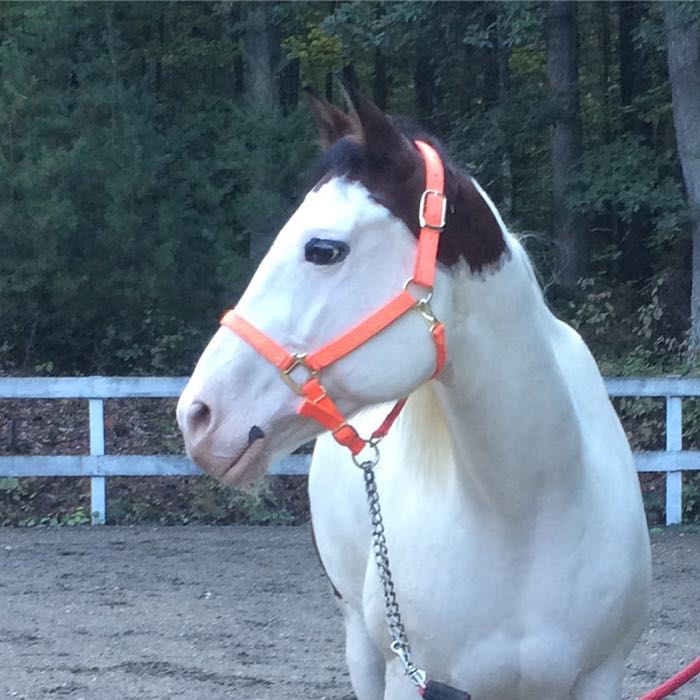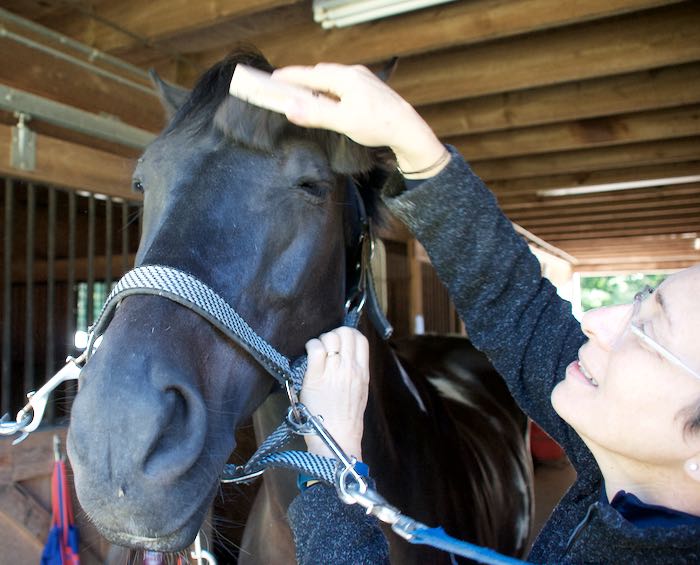Take a poll of horse people and ask what’s the favorite part of your horse? This is the answer:

The nose and lips are rubbery, flexible, soft, and expressive. Above that, nostrils flare, snort and snuffle. Horses greet friends with breaths.

They’ll say hello like that to you too, if you let them.
But horses, especially geldings, also do this:
They bite and toss their heads. See the invitation to play? The nose shoving? See the back and forth?
My client, Eileen, has a Paint horse named Nate.

They adore each other. But Nate sometimes shoves Eileen and sometimes he bites at her. This is dangerous and unacceptable behavior. It doesn’t happen all of the time. I watched them interact to see when and why. Behavior is a complex web but I was able to tease a piece of it apart.
Eileen, like me, is an expressive person who uses her hands while talking. She does it when she’s happy, but she also holds them up when telling Nate to stand still.

Eileen is using traffic cop language, universally understood among humans, but not horses. What Nate sees is something to go towards and touch, at which point, Eileen shoves him away – pushing on his muzzle – which to Nate is an invitation for gelding play. Nate likes to play hard, and, like that dun horse in the video, Nate will open his mouth, swing his head, and connect. In the past, this misunderstanding of what is acceptable caused people to hit Nate with whips and to yank on his lead rope chain. These punishments stopped the biting at the moment it happened, but didn’t teach Nate what he should do instead.
I’ve counseled Eileen how to bring clarity to her body language. First off, she’ll stop petting Nate on his face. Nate shows signs that he’s been hit there (raise your arm in a certain way and he flinches, continue and he’ll threaten back.) So, a hand approaching his head, even with the affection that Eileen brings, is something that he is wary of. Instead, she’ll pat him on his neck, which doesn’t trigger fear and aggression. Nate does love to be brushed, though, and so Eileen will do daily face grooming sessions with him, like what I do with Tonka.

Eileen will also no longer get Nate to move out of her body space by pushing against his mouth. Instead, she’ll use the halter strap that’s under his face to control his head. Here is a photo of that. Nate is relaxed and has a calm, closed lips!

With this clear and kind communication in place, we’ll be able to move on to the next part of training: teaching a stay and come at liberty!


So tricky working with animals who have been abused. Those awful memories linger for a long, long time. So often I think of your advice that all animal behavior makes perfect sense to the animal. Our job is to figure out the right context.
There’s a wonderful cartoon of a woman leaving her house, and saying to her dog “be good.” The dog proceeds to get into the garbage and shred pillows. He says “This is so GOOD! My person will be so pleased with me.” 🙂
I had a mare that had been hit with a 2×4 whenever she did anything “wrong”. I got her about 2 owners away from that experience. She just went around like she was resigned to her fate. I rode her quietly and took care of her for about a year before she started relaxing. Imagine how great I felt when I went to the barn one morning and she looked out of her stall with interest and nickered to me! I had her from age 7 until she died in her mid twenties. She was among the best horses I’ve had.
I’m glad you are there to help your client relate to her horse.
Oh, what a story. I think that the best thing that you can do for horses like that is to quietly let them be and to gradually increase your interaction. I do have issues with trainers who train out fears too quickly. That can be at least as stressful to the horse as the fears themselves. You did just the right thing! How wonderful that you had her for so many years.
Very interesting last two blogs, great pics. Loved seeing pic of you with Lily, please could we have an update on everyone when you have time really missing seeing all the extended
family…:)
What an interesting color pattern Nate has! Right down to the “eye shadow” around his left eye. How lucky he is to find someone like Eileen, who is willing to work with you, Terry, to learn how to communicate with Nate more clearly. He sounds like a willing spirit, and clearly Eileen is. I predict good things for them with your guidance.
I am struck again at how clever you are deciphering subtle clues to why horses do things, and even more impressive, to fashion simple, behavioral antidotes to what’s not working, and paths to define an even closer partnership. It really is a gift.